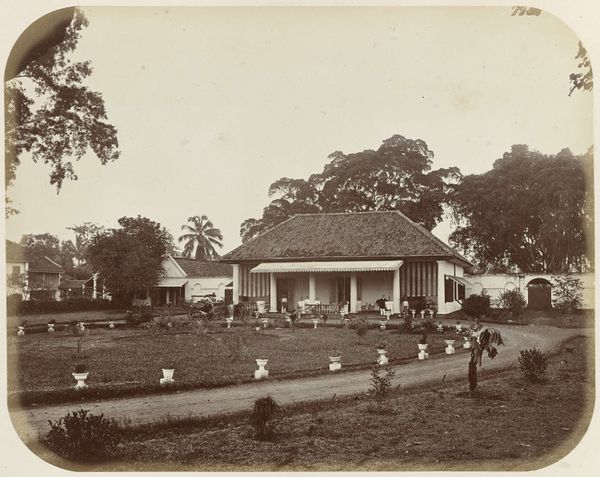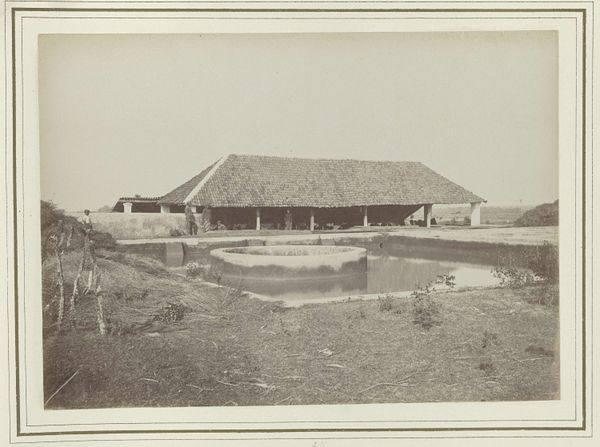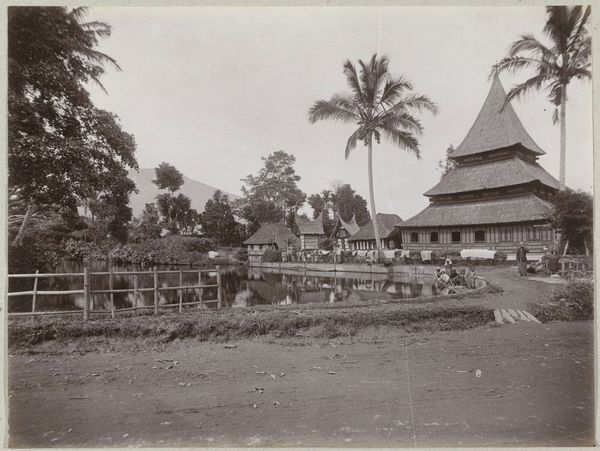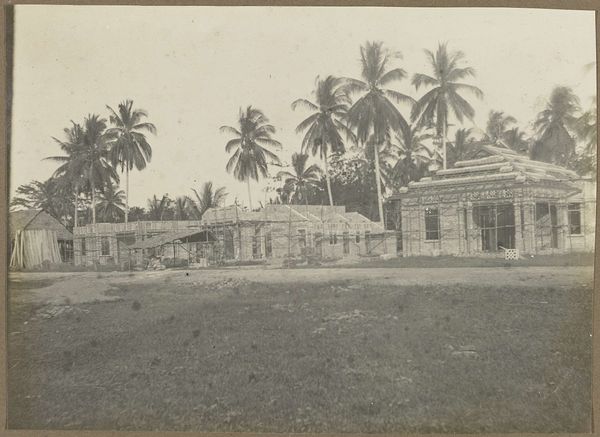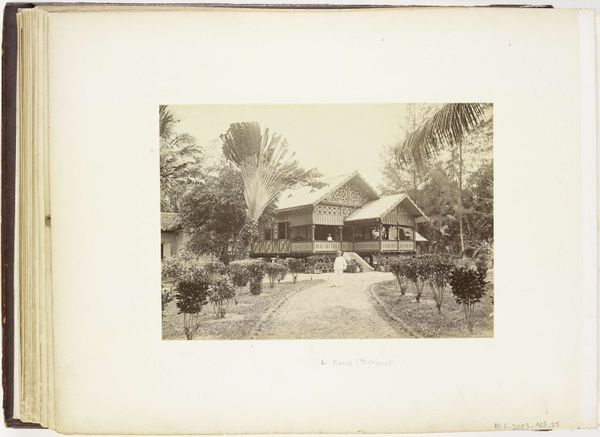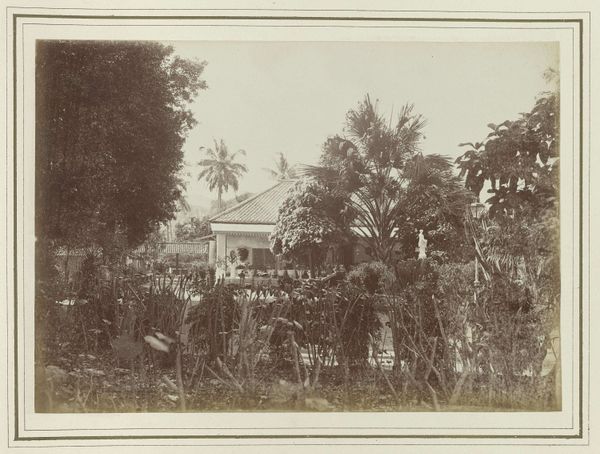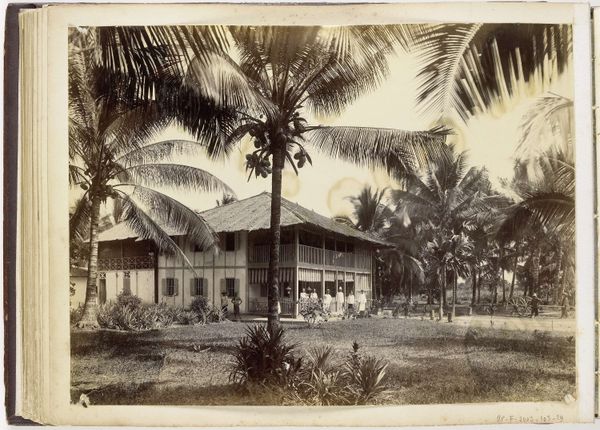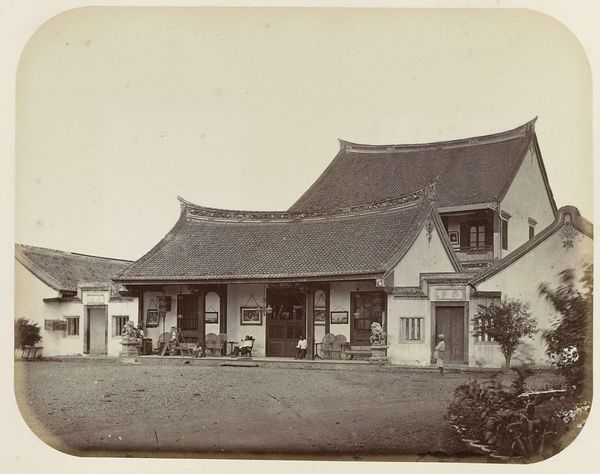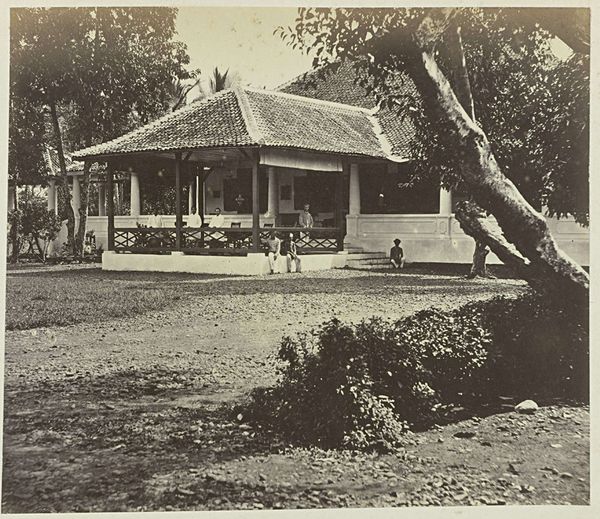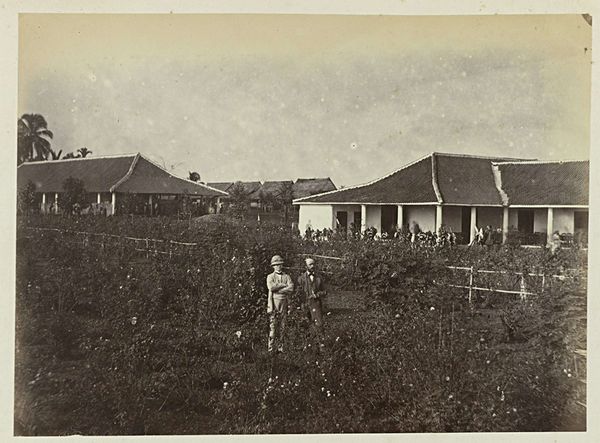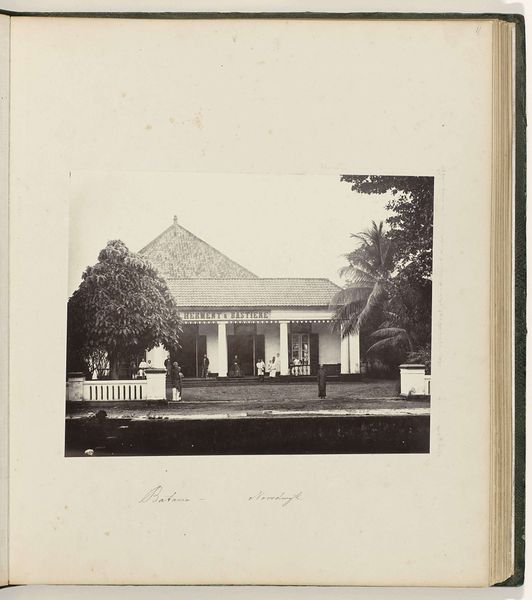
print, photography, albumen-print
#
dutch-golden-age
# print
#
landscape
#
photography
#
historical photography
#
orientalism
#
cityscape
#
albumen-print
Dimensions: height 165 mm, width 239 mm
Copyright: Rijks Museum: Open Domain
Editor: This is "Woonhuis," an albumen print from sometime between 1863 and 1869 by Woodbury & Page. It's a stately home, and my first impression is of the careful composition – how the house dominates but is also framed by the landscape. What formal elements strike you as most significant? Curator: Note the subtle tonal range within this albumen print. The foreground vegetation, with its varied textures, offers a deliberate contrast to the solid geometry of the house itself. Consider the placement of figures on the porch. Do they serve as focal points or merely accent the architectural form? Editor: I see what you mean about the tonal range. The vegetation definitely has more contrast than the house. The figures seem small and almost secondary, emphasizing the scale and shape of the house itself. How does the interplay between light and shadow contribute to the overall composition? Curator: Precisely. The light emphasizes the crisp lines of the building, especially the roof's sharp angles and the regular rhythm of the columns. The shadow, conversely, grounds the structure, providing depth. This deliberate play reveals not only form but also a certain atmospheric perspective – how the foreground melds with the midground and backdrop. Do you notice any specific patterns or shapes repeating in the artwork? Editor: I see the rectangular shapes echoed in the columns, the windows, and even the steps leading up to the house. The triangular roof is mirrored in the negative space beneath the porch. This almost feels mathematical, doesn't it? Curator: Indeed. And that's central to its visual language. The print reveals its organizational principles by establishing an equilibrium that speaks to order and permanence. The print becomes, thereby, a symbol. What do you take away from that understanding? Editor: I guess I've learned that looking at the structure can reveal as much as the subject itself. Curator: Agreed. And by applying formalism to even a photograph of a building, one uncovers its structural expression.
Comments
No comments
Be the first to comment and join the conversation on the ultimate creative platform.


